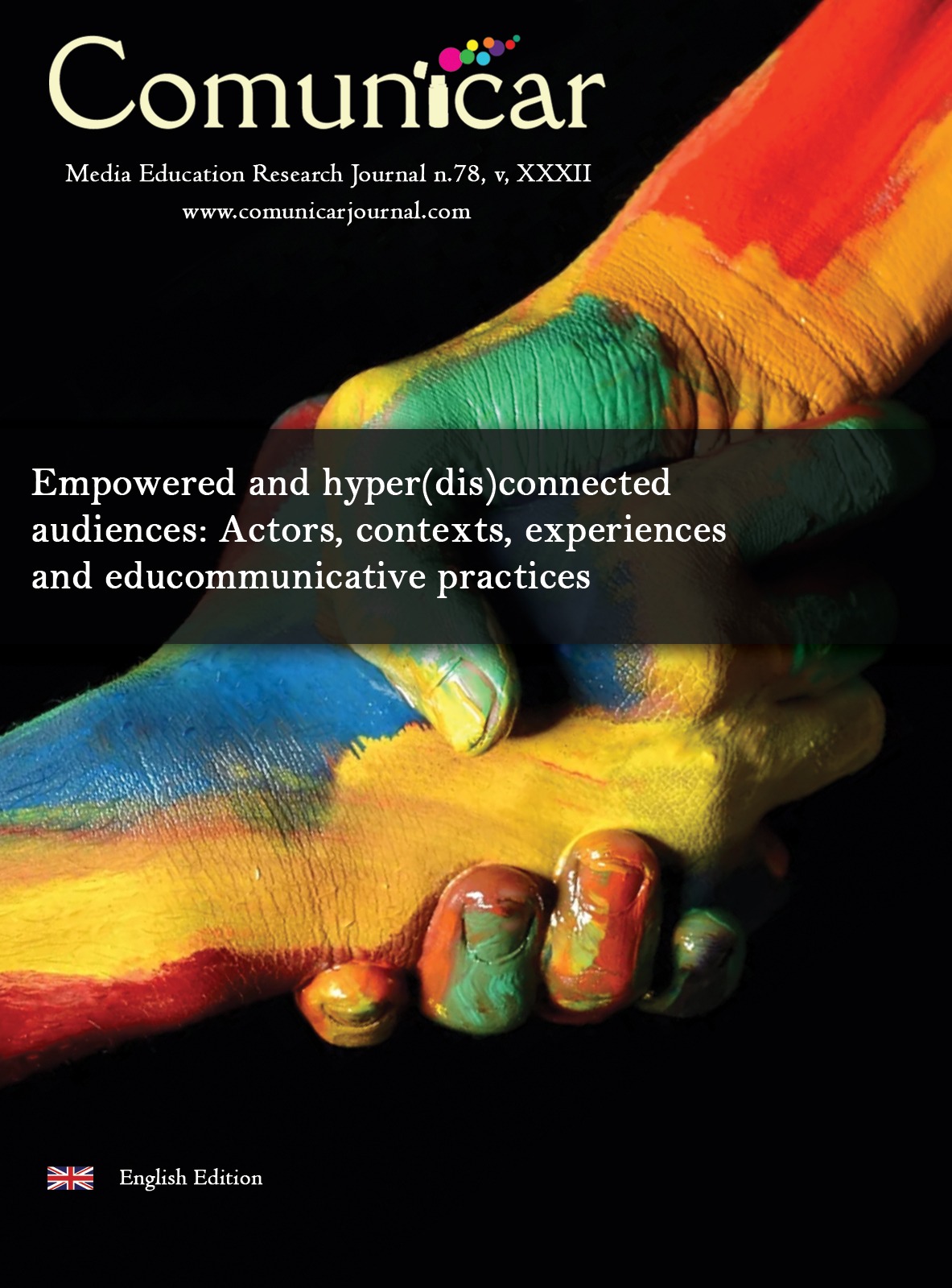使用YouTube寻求答案并做出决定:对澳大利亚成人媒体和信息素养的影响
IF 5.1
1区 文学
Q1 COMMUNICATION
引用次数: 0
摘要
这篇文章认为,有必要制定新的媒体和信息素养教育方法,以应对在YouTube上搜索信息。这篇文章从对澳大利亚人(n=3510)的调查中提取了数据,重点是他们的媒体素养态度、经验和需求。这一数据的一个子集侧重于使用YouTube搜索信息的受访者。文章询问了数据,要求谁在需要做出决定时使用YouTube访问信息;与不使用YouTube搜索信息的人相比,这些成年人的批评倾向如何;以及他们与其他群体相比的媒体能力水平。共有45%的澳大利亚人在完成调查前一个月使用YouTube搜索信息并做出决定。虽然该组织对媒体和信息持批评态度,但他们对自己的媒体能力缺乏信心。我们认为,有必要制定新的MIL方法来帮助这一群体。此外,我们认为,这一群体更有可能对YouTube上提供的MIL倡议作出反应,不太可能在图书馆或社区中心等社区机构寻求MIL学习。本文认为,有必要在媒体和信息素养教育中制定新的方法,以应对YouTube上的信息搜索。这项研究基于对澳大利亚成年人(n=3510)进行的一项调查的数据,该调查的重点是他们对媒体素养的态度、经验和需求。这些数据的一个子集集中在使用YouTube搜索信息的受访者身上。该文本询问哪些人在需要做出决定时使用YouTube访问信息;如何将这些成年人的关键条款与不使用YouTube搜索信息的人的关键条款进行比较;与其他群体相比,他们的媒体能力水平如何。在调查前一个月,45%的成年澳大利亚人在YouTube上寻找信息或做出决定。虽然这一群体对媒体和信息有着批判性的态度,但他们对自己的媒体技能缺乏信心。有人认为,有必要制定一种新的AMI方法来帮助这一群体。此外,人们认为,这一群体更有可能对YouTube本身提供的媒体和信息素养倡议作出回应,并且不太可能在图书馆或公民中心等社区机构寻求媒体和信息素养。本文章由计算机程序翻译,如有差异,请以英文原文为准。
Using YouTube to seek answers and make decisions: Implications for Australian adult media and information literacy
This article argues that it is necessary to develop new approaches to media and information literacy (MIL) education to respond to information seeking on YouTube. The article draws on data from a survey of adult Australians (N=3,510), focusing on their media literacy attitudes, experiences, and needs. A subset of this data focuses on respondents who use YouTube to seek information for a purpose. The article interrogates the data to ask who uses YouTube to access information when they need to make a decision; how these adults’ critical dispositions compare to people who do not use YouTube to seek information; and what level of media ability they have compared to other groups. A total of 45% of adult Australians had used YouTube to seek information and make a decision in the month prior to completing the survey. While this group shared a critical disposition towards media and information, they lacked confidence in their own media abilities. We argue that it is necessary to develop new MIL approaches to assist this group. In addition, we argue that this group is more likely to respond to MIL initiatives that are available on YouTube itself and are unlikely to seek MIL learning in community institutions like libraries or community centres.
Este artículo sostiene la necesidad de desarrollar nuevos enfoques en la educación en alfabetización mediática e informacional (AMI) para responder a la búsqueda de información en YouTube. El estudio se basa en los datos de una encuesta realizada a adultos australianos (N=3.510), centrada en sus actitudes, experiencias y necesidades en materia de alfabetización mediática. Un subconjunto de estos datos se centra en los encuestados que utilizan YouTube para buscar información con algún fin. El texto indaga sobre quiénes utilizan YouTube para acceder a la información cuando necesitan tomar una decisión; cómo se comparan las disposiciones críticas de estos adultos con las de las personas que no utilizan YouTube para buscar información; y qué nivel de competencia mediática tienen en comparación con otros grupos. El 45% de los australianos adultos acudió a YouTube en busca de información o para tomar una decisión durante el mes anterior a la realización de la encuesta. Aunque este grupo compartía una disposición crítica hacia los medios de comunicación y la información, carecía de confianza en sus propias habilidades mediáticas. Se argumenta que es preciso desarrollar un nuevo planteamiento de la AMI para ayudar a este colectivo. Además, se considera que este grupo es más propenso a responder a las iniciativas de alfabetización mediática e informacional que están disponibles en el propio YouTube y que es improbable que busque la alfabetización mediática e informacional en instituciones comunitarias como bibliotecas o centros cívicos.
求助全文
通过发布文献求助,成功后即可免费获取论文全文。
去求助
来源期刊

Comunicar
Multiple-
CiteScore
10.10
自引率
5.40%
发文量
40
审稿时长
20 weeks
期刊介绍:
Comunicar specialized in educommunication: communication and education, ICT, audiences, new languages...; monographs specialized in current issues. Double format: printed and online; digitally, accessible in full text, free of charge, for the entire scientific community and researchers around the world. Coeditions printed in Spanish and English for the whole world. Published by Oxbridge Publishing House which collaborates with many international centres and universities.
 求助内容:
求助内容: 应助结果提醒方式:
应助结果提醒方式:


